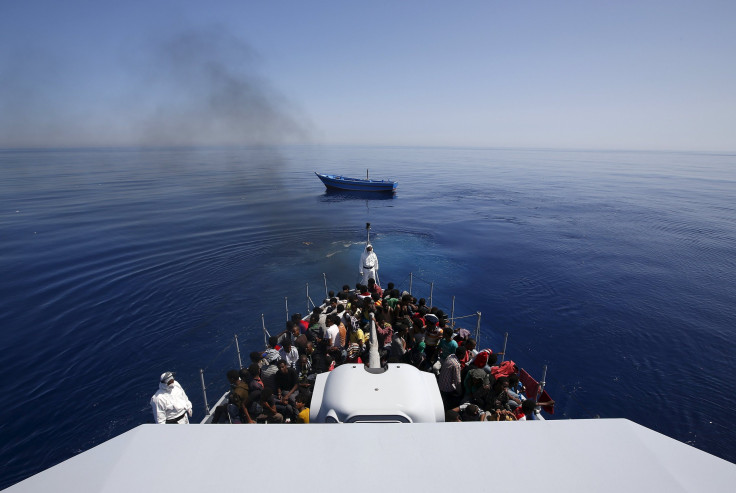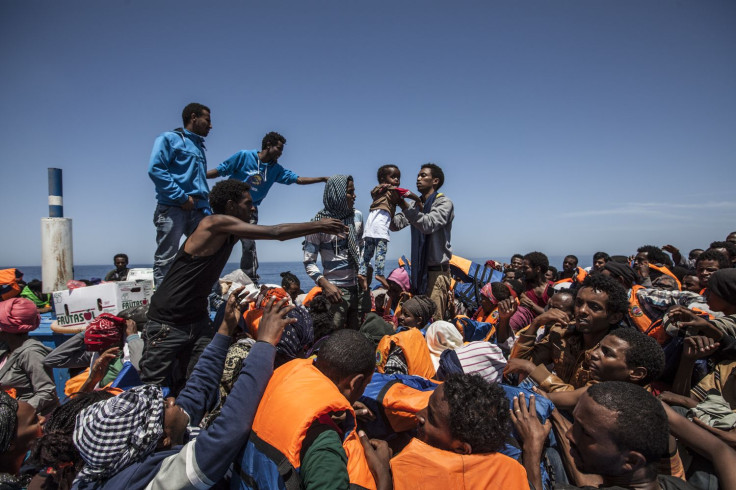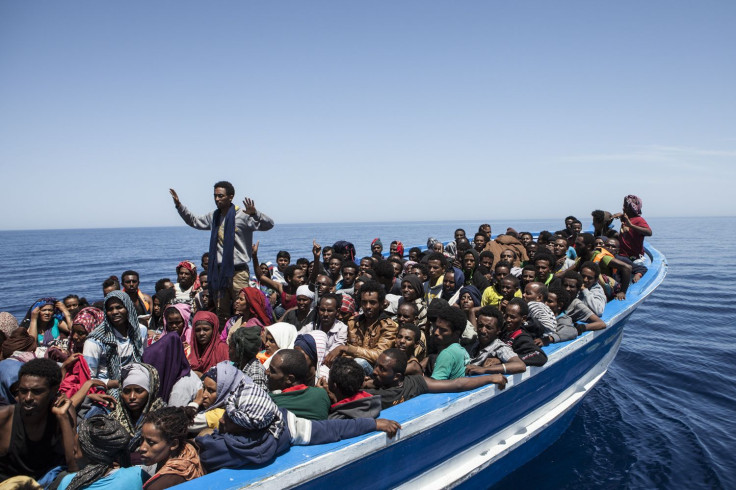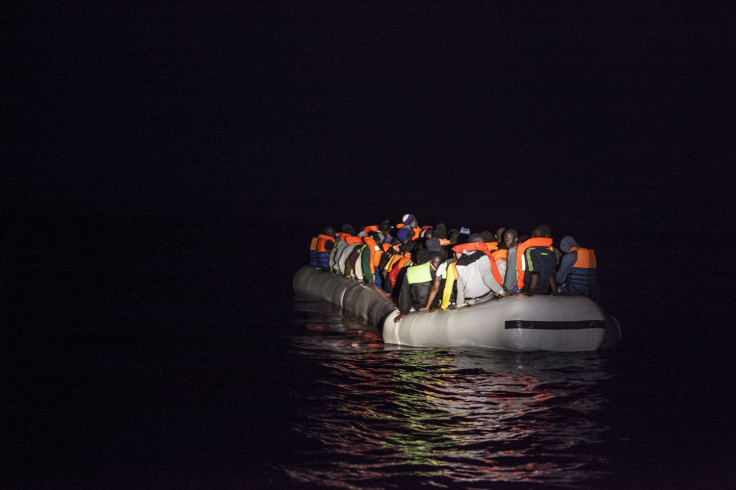European Union Refugee Plan Unlikely To Work, Experts Say

More than 35,000 asylum seekers have arrived on the European continent this year, fleeing war, poverty and persecution in their homelands in Syria and multiple countries around Africa. The enormous increase since whole of last year, according to United Nations figures, has left Europe scrambling for a solution as new arrivals continue to make their way across the Mediterranean from North Africa.
But the European Union's latest plan to halt the smuggling of people by destroying the boats after rescuing the refugees may be doomed to fail, insiders say.
“I’m not going to pass judgement on whether it’s a good or bad idea, but what is definite is that this is not the solution,” Martin Xuereb, a former Maltese army general who is now operations director at Migrant Offshore Aid Station (MOAS), told International Business Times. “It’s not even a Band-Aid because a Band-Aid normally helps something.”

MOAS, founded last year, was the first privately funded project to help rescue migrants on the Mediterranean. In the past three weeks alone, it says its crew has rescued more than 4,400 people and brought them to Sicily, the Italian island that sees most of the arrivals from Africa.
Last month, the European Union proposed a plan to share the burden of refugees among its 28 countries. In addition to that, it created a new plan that involves a much simpler idea: Get rid of the immigrant-carrying ships themselves. The plan, which got 11.8 million euros in funding, involves a naval force supplied by European Union nations, which would destroy the ships after people are evacuated from them, in an attempt to cut off the "business model” for the smugglers who take people from North Africa to Europe, mostly leaving Libya and arriving in Italy. In a Monday announcement, the European Commission said that the operation will address the emergency situation while saving lives and "tackling the root causes of irregular migration."
But analysts say the boat-sinking plan will accomplish none of these things.
“I think the European Union action is a grand display of might, a limited-term deterrent at best, and unlikely to be highly efficacious,” said Tuesday Reitano, head of the secretariat at the Global Initiative against Transnational Organized Crime.
Not only would the plan require the fundamental cooperation of war-torn Libya, a nation without a real government, it also doesn’t address the root causes that push people into the hands of smuggling networks, experts said.
Europe came up with the plan only as a reaction and won't be able solve the crisis militarily, according to Reitano.
“It’s more of a response to international criticism that the E.U. states have derogated their human rights and humanitarian responsibilities than a genuine effort to address the systemic challenges that have triggered the crisis,” Reitano said.
Her organization has teams working on the ground, interviewing smugglers about their business throughout the continent. She says that destroying the ships, the last part of the intricate chain that gets would-be asylum seekers to Europe’s border, won’t do a lot to curb the problem.

“There is much talk of the naval action being accompanied by concerted efforts to break down criminal networks on land, but those loading the boats in Libya are simply not that organized,” she said. Plus, “those bringing migrants to Libya are a separate set of actors,” she said. The people-smuggling industry, unlike other clandestine operations such as drug trafficking, generally operates in the open in Libya and other African nations, where it is an important driver of economic activity, Reitano said.
While migrants come from all over Africa, there are two major routes they take, according to a report from the United Nations High Commissioner for Refugees (UNHCR.) Asylum-seekers from Sudan, Ethiopia, Eritrea and Somalia generally travel with smugglers to Addis Ababa in Ethiopia, and later switch to a different group of smugglers in Khartoum, Sudan, who take them on the most expensive part of the journey -- through the Sahara. That can take anywhere from four to 10 days before reaching Kufra in Libya. Between 10,000 and 12,000 people make this journey every month. Migrants coming from West and Central Africa generally move through Niger or Mali, through Algeria, and then on to Libya. UNHCR estimates that between 2,000 and 8,000 migrants make this journey every month, paying hundreds of dollars each.
Smugglers charge a great deal of money to help protect their charges from militant and terrorist groups who control various areas in between. The vast majority of smuggling operations are run by the nomadic tribes of the Sahara and Sinai, Reitano noted. Focusing on the smugglers who run the boats, who don’t have especially strong relationships with those who gets the migrants to Libya, means looking at just the final link in this very long chain.
Then there's the lawlessness of Libya itself.
“Because the southern portion of Libya still remains largely ungoverned, with great permeability of its borders, illegality is still a ruling principle that favors a huge cross-border movement of migrants and the proliferation of radical factions and various militias,” said Arturo Varvelli, research fellow at the Istituto per gli Studi di Politica Internazionale (ISPI), a think tank based in Italy. Simply halting traffic across the Mediterranean won’t solve the crisis, which could get worse soon, he said.
“Libya is on the brink of becoming a failed state at the center of a critical region of the world. In a few months Libyans might also become migrants,” Varvelli said.
Since dictator Muammar Gaddafi was ousted in 2011, the country has continued to fracture from within. Now, two separate governments are competing for power, while tribal militias have control over some parts of the country. The chaos has allowed the Islamic State group to gain a foothold in Libya as well -- and that has convinced some African migrants who had been residing in Libya to seek a new life in Europe instead.
A group called the Libya Dawn alliance has control over the western part of the country from its base in Tripoli, while another group called Operation Dignity generally controls the east from its base in Tobruk. It’s this government that is recognized as legitimate by the international community and will be part of discussions with the European Union announced under the new plan, although it doesn't really have any power beyond a slice of Libya in the east.
But though the groups are opponents on the ground, they’re united about one thing: how much they dislike the new EU plan.
Earlier this month Libya’s ambassador to the United Nations, Ibrahim Dabbashi, told the Associated Press that European plans to deploy more naval ships to the region were “completely stupid” and that the only way to solve the problem would be to arm the “legitimate” government, adding that he would “not accept any boots on the ground.” And back in April, Tripoli-based Libya Dawn politician Abdel-Qader Huweily told reporters that “taking our boats without our permission would be considered a declaration of war against Libya.”
But even if there was cooperation with some form of Libyan government, there’s still one key detail left unaddressed: How the naval operation would actually work.
“At this point, it’s not at all clear exactly how the EU naval operation will function in practice,” said David Michel, director of the Environmental Security Program at the Stimson Center, a U.S.-based global security think tank.
For one thing, most of the smuggling boats launch from the western part of Libya, which is not controlled by the recognized government and is closer to landing points in Malta or Italy, both EU nations. And smugglers may find a way around the European navies even if those were able to find and sink their boats.

Since the boats are relatively cheap, destroying them may force smugglers to use less seaworthy vessels, putting migrants in even more danger. Hundreds at a time routinely die when rickety, overcrowded boats sink or capsize before rescuers can get to them.
“If the EU plan goes into operation, it’s possible that the smugglers might turn to stealing or pirating local fishing boats to avoid having to bear the cost of their potential destruction,” Michel said. “The prospect of trying to destroy the smuggling boats on the shore in Libya would be exceedingly dangerous and controversial." Not only would the decision to sink a boat depend on intelligence, it would also risk innocent casualties among migrants who may still be aboard, and could also put EU forces at risk.
The plan also does not specify exactly which navies will be involved or how, or who will do the shooting. And it’s still not certain that the U.N. would approve the use of force under Chapter 7 of the United Nations charter. Regardless, the operation is scheduled to be on the agenda of the European Union's foreign ministers meeting next month.
© Copyright IBTimes 2024. All rights reserved.






















